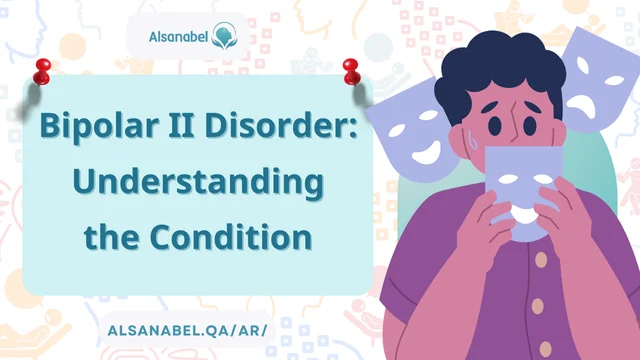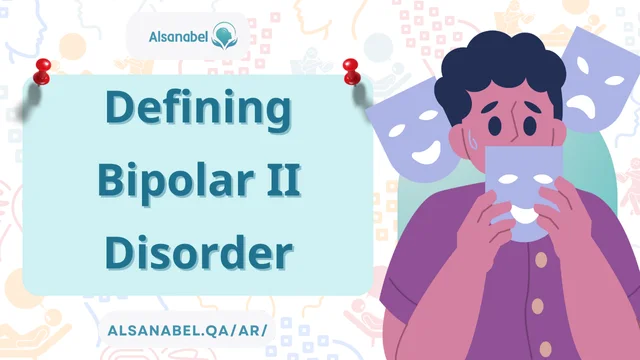
Bipolar II Disorder is a complex mental health condition that often goes misunderstood due to its nuanced presentation. While it shares similarities with Bipolar I Disorder, its distinct characteristics set it apart, requiring tailored approaches to diagnosis and management. This article provides a comprehensive explanation of bipolar II disorder, exploring its symptoms, causes, and treatment options. By understanding the intricacies of this condition, individuals and their loved ones can take proactive steps toward better mental health.
Defining Bipolar II Disorder

What Is Bipolar II Disorder?
At its core, bipolar II is a mental health condition characterized by alternating episodes of depressive lows and hypomanic highs. Unlike Bipolar I Disorder, individuals with Bipolar II experience hypomania rather than full-blown manic episodes. Hypomania is less intense than mania but can still significantly impact a person’s daily life.
How Bipolar II Disorder Differs From Other Mood Disorders
To fully appreciate bipolar II disorder explained, it’s essential to recognize how it diverges from other types of bipolar disorder and general mood disorders. The hallmark of Bipolar II is the presence of hypomania coupled with prolonged depressive episodes, whereas Bipolar I includes more severe manic episodes.
Recognizing Symptoms of Bipolar II Disorder
The Two Key Phases
The symptoms of bipolar II are categorized into two main phases: depressive episodes and hypomanic episodes. Each phase manifests differently, creating a dynamic yet challenging experience for those living with the condition.
Depressive Episodes
- Persistent sadness or hopelessness
- Fatigue or lack of energy
- Difficulty concentrating or making decisions
- Changes in sleep patterns (insomnia or hypersomnia)
- Feelings of worthlessness or excessive guilt
- Loss of interest in activities once enjoyed
Hypomanic Episodes
- Increased energy or restlessness
- Elevated or irritable mood
- Decreased need for sleep
- Heightened creativity or productivity
- Engaging in risky or impulsive behaviors
- Racing thoughts or rapid speech
The Challenge of Mixed Episodes
In some cases, individuals may experience symptoms of both hypomania and depression simultaneously, known as mixed episodes. These episodes are particularly challenging to navigate and highlight the complexity of managing bipolar II disorder.
Understanding the Causes and Risk Factors
What Triggers Bipolar II Disorder?
While the exact cause of bipolar II disorder remains unclear, research suggests a combination of genetic, biochemical, and environmental factors contribute to its development.
- Genetics: A family history of bipolar disorder increases the likelihood of developing the condition.
- Brain Chemistry: Imbalances in neurotransmitters such as serotonin and dopamine play a crucial role.
- Life Events: Stressful or traumatic events can act as triggers for the onset or exacerbation of symptoms.
Who Is at Risk?
Certain populations may be at a higher risk due to factors such as:
- A genetic predisposition to mood disorders
- A history of substance abuse
- Chronic stress or significant life changes
- Pre-existing mental health conditions, such as anxiety or depression
Treatment Options for Bipolar II Disorder
Medication Management
The cornerstone of treatment for bipolar II often involves medication to stabilize mood and prevent future episodes. Commonly prescribed medications include:
- Mood Stabilizers: Lithium is a gold-standard treatment for reducing the intensity of mood swings.
- Antidepressants: Used cautiously, these medications address the depressive phase.
- Antipsychotics: Effective in managing hypomanic symptoms or mixed episodes.
Therapeutic Interventions
Psychotherapy at Al Sanabel Specialized Psychiatric Center In Qatar is a vital component of treatment, offering tools to understand and manage the condition better.
- Cognitive Behavioral Therapy (CBT): Helps identify and challenge negative thought patterns.
- Interpersonal and Social Rhythm Therapy (IPSRT): Focuses on stabilizing daily routines and relationships.
- Psychoeducation: Increases awareness and equips individuals and families with strategies to manage the disorder effectively.
Lifestyle Adjustments
Incorporating lifestyle changes can significantly enhance the effectiveness of other treatments. Recommendations include:
- Maintaining a consistent sleep schedule
- Engaging in regular physical activity
- Practicing mindfulness or stress-reduction techniques
- Avoiding alcohol and recreational drugs
Living With Bipolar II Disorder
Managing Bipolar II Disorder in Daily Life
Successfully managing bipolar II disorder requires a proactive approach, combining professional treatment with self-care strategies. Building a reliable support system and setting realistic goals are key steps toward maintaining stability.
The Importance of Early Intervention
Early recognition of symptoms can prevent episodes from escalating and improve long-term outcomes. Regular check-ins with healthcare professionals ensure that the treatment plan remains effective and adapted to changing needs.
Frequently Asked Questions

1. What are the differences between Bipolar I and Bipolar II Disorder?
The primary difference lies in the severity of manic episodes. Bipolar I involves full-blown mania, while Bipolar II is characterized by hypomanic episodes and more frequent depressive phases.
2. What are the symptoms of a manic episode?
Manic episodes include heightened energy, extreme euphoria or irritability, decreased need for sleep, and risky behaviors. In contrast, hypomanic episodes in Bipolar II are less severe but still impactful.
3. How is bipolar disorder treated?
Treatment typically involves a combination of medication, psychotherapy, and lifestyle adjustments tailored to the individual’s needs.
4. Can bipolar disorder be hereditary?
Yes, genetics play a significant role in bipolar disorder, with individuals having a family history of the condition at a higher risk.
5. What are the long-term effects of bipolar disorder?
Without treatment, bipolar disorder can lead to disrupted relationships, financial difficulties, and impaired functioning. However, with appropriate management, individuals can lead fulfilling lives.
Bipolar II disorder explained reveals its complexity and the importance of tailored care. By recognizing the symptoms of bipolar II and pursuing effective treatment for bipolar II, individuals can achieve stability and improve their quality of life. Through professional guidance and a commitment to self-care, managing this condition becomes a realistic and achievable goal.
